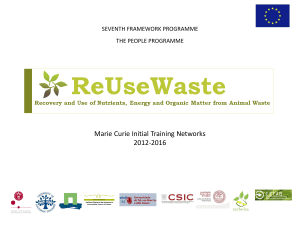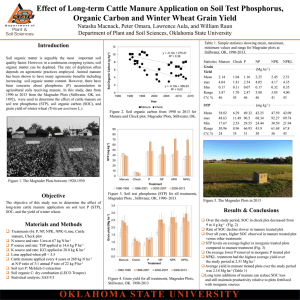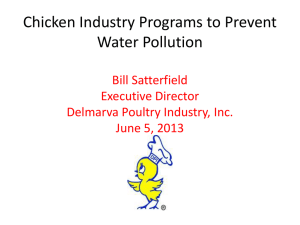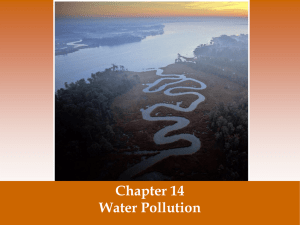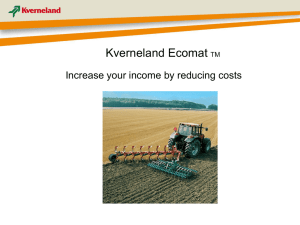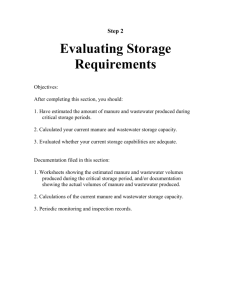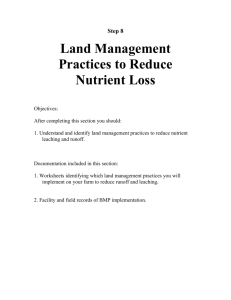Winter Spreading of Liquid Swine Manure
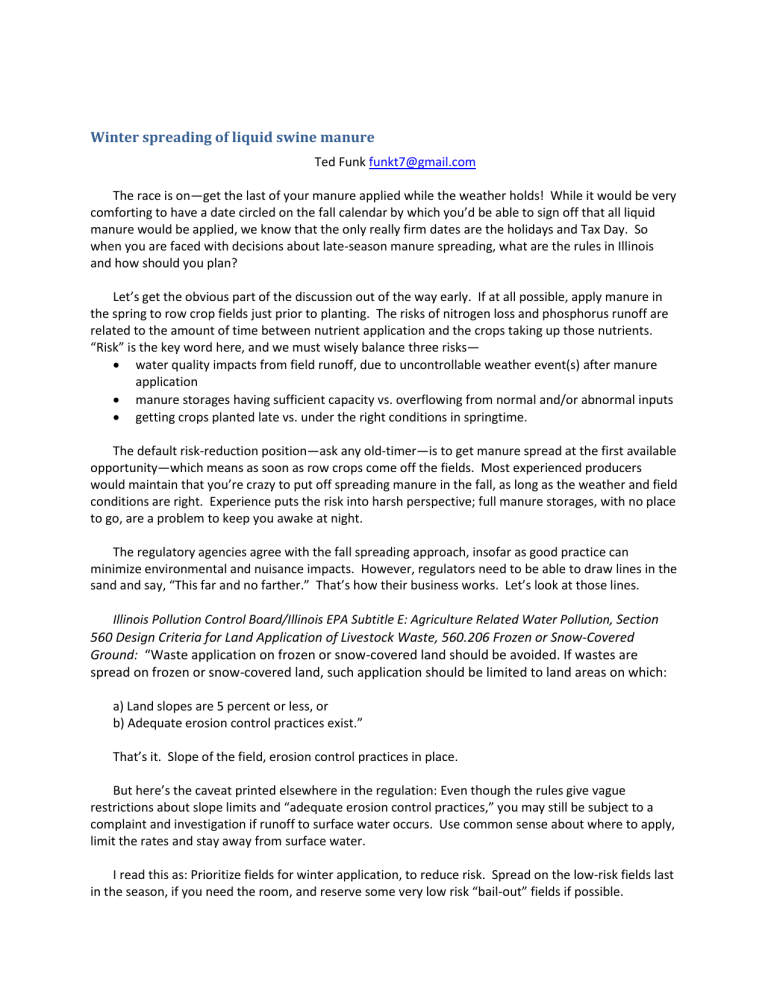
Winter spreading of liquid swine manure
Ted Funk funkt7@gmail.com
The race is on—get the last of your manure applied while the weather holds! While it would be very comforting to have a date circled on the fall calendar by which you’d be able to sign off that all liquid manure would be applied, we know that the only really firm dates are the holidays and Tax Day. So when you are faced with decisions about late-season manure spreading, what are the rules in Illinois and how should you plan?
Let’s get the obvious part of the discussion out of the way early. If at all possible, apply manure in the spring to row crop fields just prior to planting. The risks of nitrogen loss and phosphorus runoff are related to the amount of time between nutrient application and the crops taking up those nutrients.
“Risk” is the key word here, and we must wisely balance three risks—
water quality impacts from field runoff, due to uncontrollable weather event(s) after manure application
manure storages having sufficient capacity vs. overflowing from normal and/or abnormal inputs
getting crops planted late vs. under the right conditions in springtime.
The default risk-reduction position—ask any old-timer—is to get manure spread at the first available opportunity—which means as soon as row crops come off the fields. Most experienced producers would maintain that you’re crazy to put off spreading manure in the fall, as long as the weather and field conditions are right. Experience puts the risk into harsh perspective; full manure storages, with no place to go, are a problem to keep you awake at night.
The regulatory agencies agree with the fall spreading approach, insofar as good practice can minimize environmental and nuisance impacts. However, regulators need to be able to draw lines in the sand and say, “This far and no farther.” That’s how their business works. Let’s look at those lines.
Illinois Pollution Control Board/Illinois EPA Subtitle E: Agriculture Related Water Pollution,
Section
560 Design Criteria for Land Application of Livestock Waste, 560.206 Frozen or Snow-Covered
Ground: “Waste application on frozen or snow-covered land should be avoided. If wastes are spread on frozen or snow-covered land, such application should be limited to land areas on which:
a) Land slopes are 5 percent or less, or b) Adequate erosion control practices exist.”
That’s it. Slope of the field, erosion control practices in place.
But here’s the caveat printed elsewhere in the regulation: Even though the rules give vague restrictions about slope limits and “adequate erosion control practices,” you may still be subject to a complaint and investigation if runoff to surface water occurs. Use common sense about where to apply, limit the rates and stay away from surface water.
I read this as: Prioritize fields for winter application, to reduce risk. Spread on the low-risk fields last in the season, if you need the room, and reserve some very low risk “bail-out” fields if possible.
Are there other lines that shouldn’t be crossed?
Calendar date. No. In Illinois, there currently is no late fall date after which, if you want to apply manure, the rules say, “This is a special, emergency case.” Illinois is a “tall state” with crop seasons and average temperatures varying quite a bit with latitude from north to south. There are discussions about setting a date, but nothing in a rule as yet. Obviously, the longer you wait into winter, the greater the risk.
Soil temperature. No. Warm soil equals more nitrification of ammonia nitrogen to nitrate, thus more potential loss of nitrate out of the root zone. Cool soil in the fall is good, as long as it isn’t frozen.
There is guidance implied by agronomic practice, but Illinois EPA for example does not put a maximum soil temperature prohibition on fall manure application. Can you reduce nitrification by use of a nitrification inhibitor material in manure? Probably, but there are several factors involved, so don’t hold me to a percentage.
Field characteristics. Anything that reduces soil erosion is usually a plus for selecting a manure application field. Extremes: Surface-applied and unincorporated manure, normal rates, on an HEL field that’s had corn silage removed—a formula for trouble. Injected liquid manure on a non-tile-drained,
NHEL field that has lots of corn crop residue—you’re looking good. Which brings up all the discussion about vegetative buffers, cover crops, pasture and hay field options, etc.—keep your options open when the spreading window starts to close. Tile drains could be trouble: monitor the outlets if you spread manure over tile drains. Some fields with shallow soils over bedrock, gravel, or sand should be avoided as well.
Soil surface—frozen to a depth that prevents injection of liquid manure. Assume there will be little or no infiltration of liquid manure into the soil until the cover thaws—then runoff can take manure with it to surface water. A word of advice: If you apply in winter, you had better have a plan in case there is manure-laden runoff toward surface water.
Soil surface—snow or ice cover. A big red flag should pop up for a field with this condition. If you surface apply on snow or ice, it’s reasonable to assume there won’t be any infiltration until the cover thaws—then snow or ice melt will take manure with it. The only protection you have is more distance to surface water, less slope, and more residue or crop cover. But if you can inject liquid manure into non-frozen soil beneath the surface, there is no specific prohibition against it—just the slope limit and vague erosion control guidelines. I’d suggest you carefully monitor runoff during a melt and do damage control if you find manure coming off the field.
Caveats:
1.
If you are operating under an NPDES CAFO permit, the terms of your permit may be more restrictive than the guidelines I’ve outlined in this article. By the way, one of the more sure ways to force your operation into the NPDES permit program is to be slipshod about spreading manure in winter.
2.
No dumping! Manure should be applied at a maximum of the “agronomic” rate of nitrogen or phosphorus, depending on the specific situation. There is no provision in the rules for
“emergency over-application” of manure! If you aren’t sure of the rate you should use, don’t
guess; make a phone call. And there is no excuse for operating a spreader that has not been calibrated.
3.
Those facilities that are required by virtue of size (over 1,000 Animal Units) to have a manure management plan under the LMFA are already bound to respect the manure spreading setbacks from surface water and well heads. But those setbacks should be honored by smaller operations as well; fall and winter spreading are, if anything, more sensitive times for manure runoff, and setbacks help.
4.
Keep written records of manure storage levels as we head into winter.
For further reading, have a look at the new Illinois NRCS 590 Nutrient Management Standard. Find it on the electronic field office technical guide website, or contact your local NRCS office. The 590
Standard will help you see how the various stakeholder groups in Illinois have come to a compromise on nutrient management practices that include manure application. Keep in mind that the 590 Standard is not regulatory, but is important if you participate in conservation programs.
Please feel free to contact the author if you have questions.
--30--


